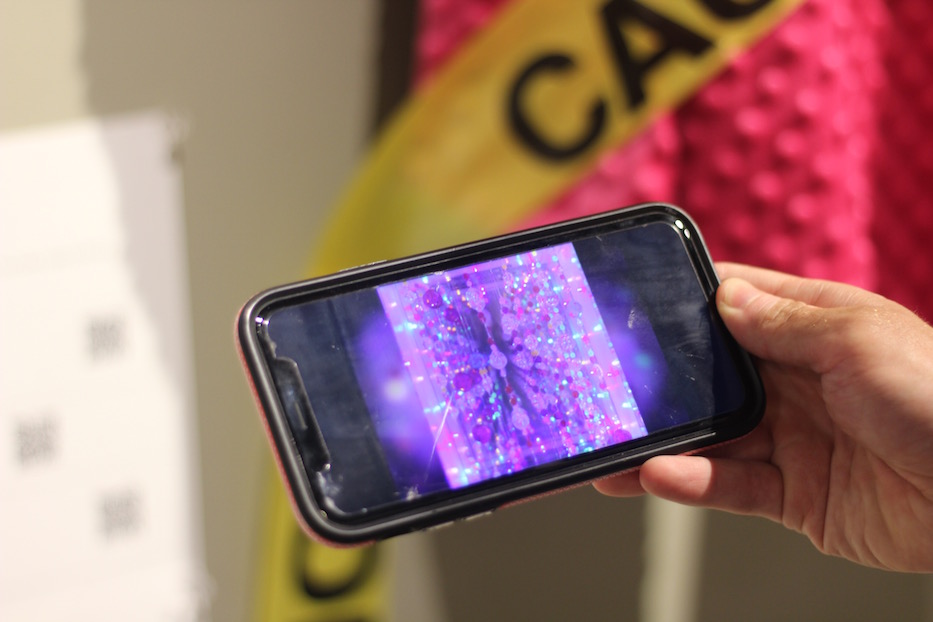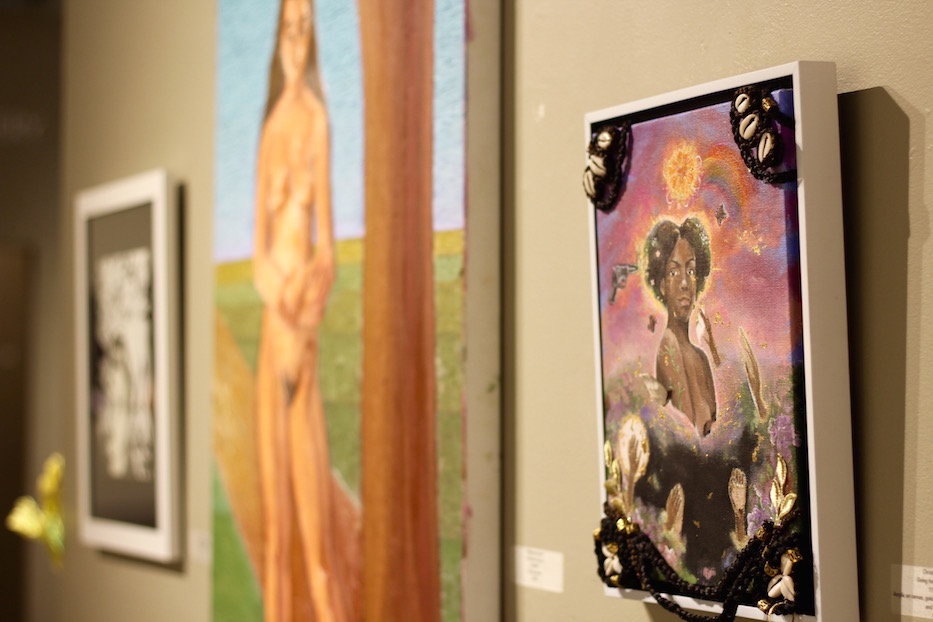
Kehler Liddell Gallery | Arts & Culture | Westville | COVID-19

| Christina Jones’ Going Home To Oshun is one of over 70 works in I Am ... at Kehler Liddell Gallery. The show runs through August 30. Lucy Gellman Photos; all work pictured is by artists in the show. |
You see the girl before you see the gun. Around her, the sky is the color of spun sugar, a rainbow in the righthand corner. She is regal, eyes locked with the viewer as she turns toward them. Her lips part just a tiny bit. Billows of black smoke come up to meet wispy pink and purple clouds. Tight black braids frame the image, woven with cowrie shells and fixed on the edges of the small canvas.
And there is the weapon, hanging in midair just to the left of her head. A chorus of coffee-colored fists and palms, all haloed in light, rise beneath her. Gold fabric shimmers at the base. They are sending her home, long before it seems she should have to go.
Christina Jones’ Going Home To Oshun is one of over 70 works in I Am … , the fourth annual juried show at Kehler Liddell Gallery, and the first to welcome viewers back from quarantine. After a months-long closure due to COVID-19, the gallery has reopened to visitors by appointment, with limited capacity.
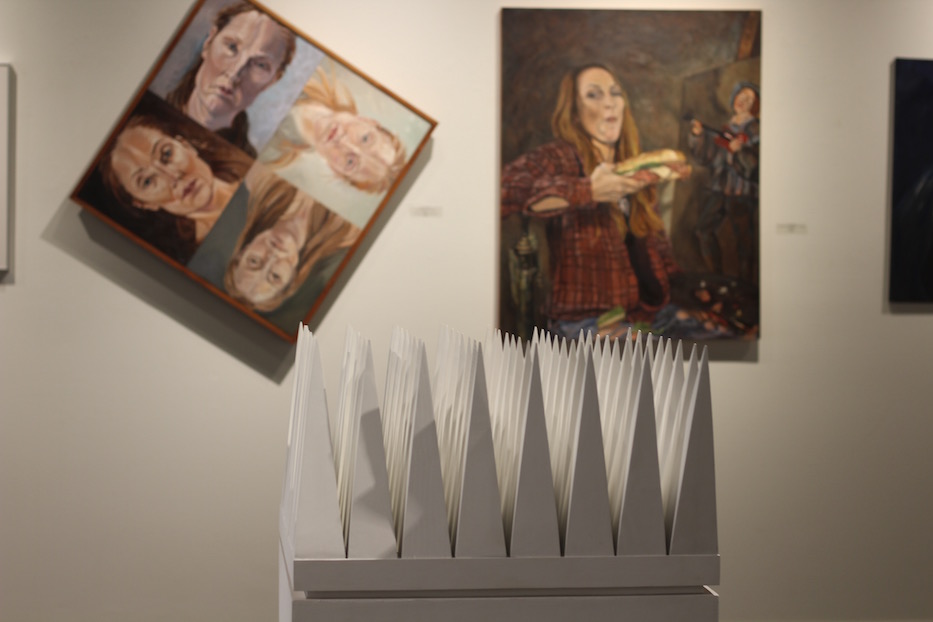
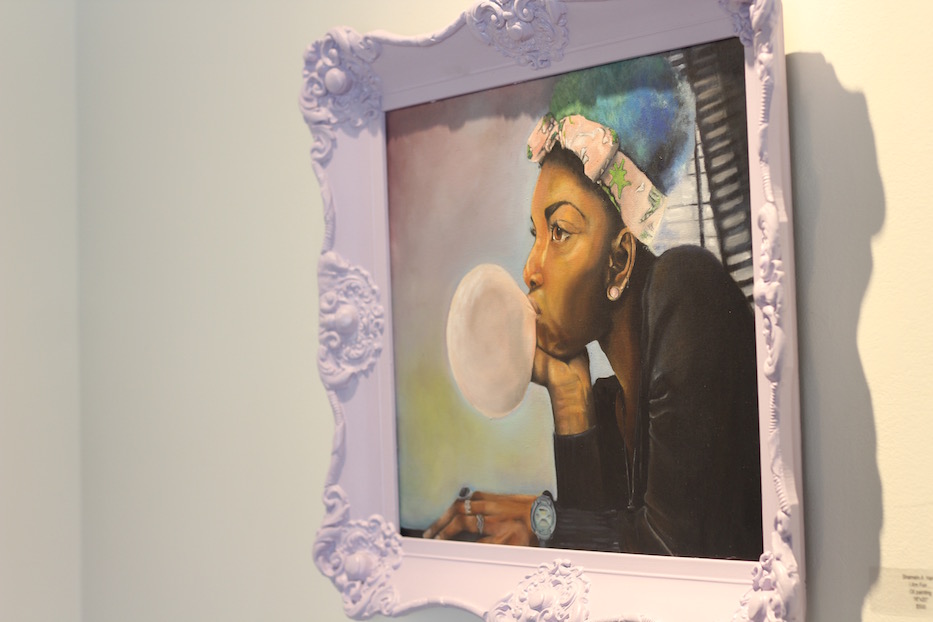
| Top: Brian Williams, Swaying Points, with Victoria Selbach’s He Loves Me He Loves Me Not and Courtney Silvia’s Self Portrait After Judith Leyster With A Hoagie in the background. Bottom: Shamain A. Hardy's tongue-in-cheek I am Fun. |
The exhibition runs through August 30 and is also available to viewers online. In response to concerns around the highly communicable nature of the coronavirus, the gallery has instituted a maximum of four people at a time and is in strict compliance with the city’s mask mandate.
In the exhibition, 71 area artists have worked through the question “how do you see yourself?” with oil and acrylic paints, wood- and metalwork, freestanding sculpture, mixed media collage, video projection and AI technology. Because works were selected months ago, very few engage with the current moment—and the show isn’t asking them to. Instead, they are fairly introspective: viewers get a rare glimpse into the minds of artists they know, and those that they may be discovering for the first time.
The scope is the fun part. A few artists riff on the selfie; others are more contemplative. Near the Whalley Avenue entrance of the gallery, Marsha Borden’s My Tattoos calls out to a viewer, pulling them in as it hangs on the wall. On a blouse that looks like it could fit a child—creamy fabric, scalloped Peter Pan collar, a neat, lacy pattern down the side and ruffles at the hem—Borden has embroidered a small ocean of self-doubt.
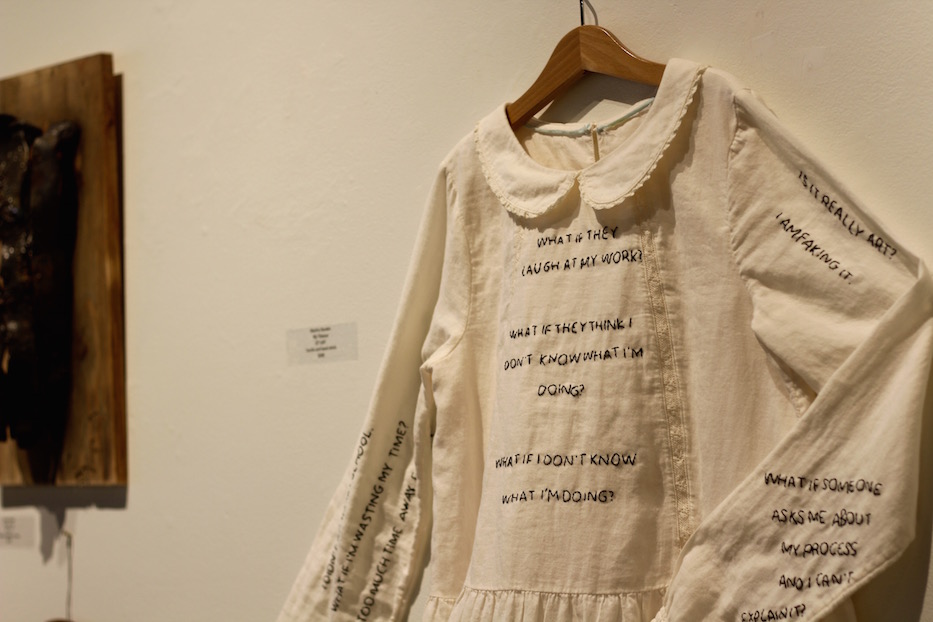
Marsha Borden’s My Tattoos.
Phrases, stitched in black thread and all-capital letters, read: What if they laugh at my work? If they think I don’t know what I’m doing? What if I don’t know what I’m doing? The list goes on.
If they are her personal tattoos, they are also deeply relatable; Borden taps into the history of domestic craft to give viewers a piece that can at once be a mirror and a challenge to keep making despite that inner critic. The piece seems to work especially well where it is installed, close to Kelley Griffin’s cheeky, bitter Trying Is The Fun Part, a phrase from the obstetric cosmos that seems right up there with “geriatric pregnancy” and the 300-plus synonyms for a woman’s vagina.
In the piece, over two dozen empty syringes inject themselves a two-dimensional, bloody uterus and fallopian tubes, fixed against a backdrop of ovulation calendars, temperature checks and prescriptions for Lupron—all the fixings of in vitro fertilization or IVF.
If Griffin is tired of hearing friends joke about the pleasure of creating a human, it shows: the piece is emotionally and even physically painful to look at. It takes a jab at not only the absurdity of language and phrasing, but an entire industry dedicated to people who want a biological baby so badly they are willing to abuse their bodies, which medicine has deemed somehow defective.
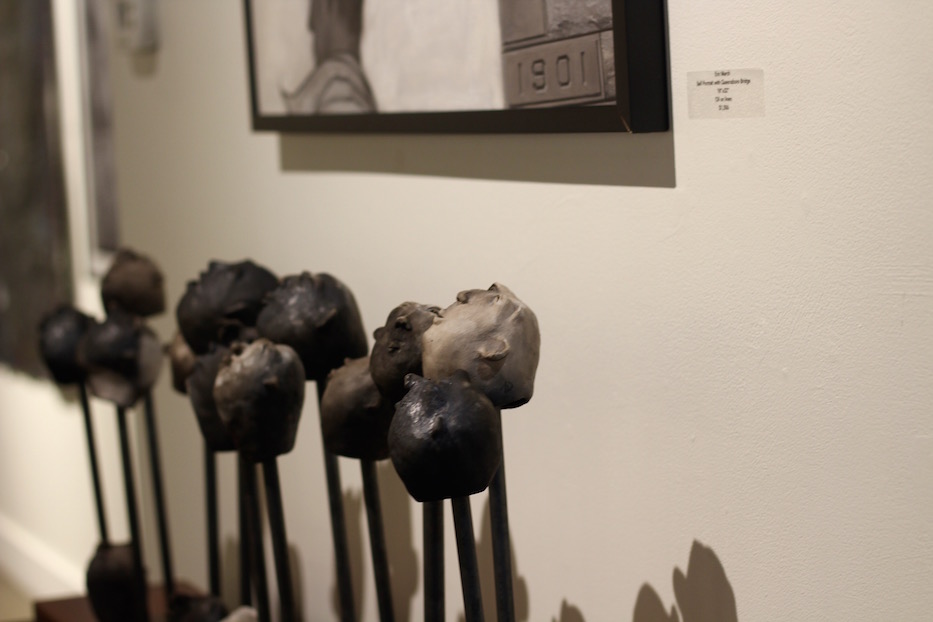
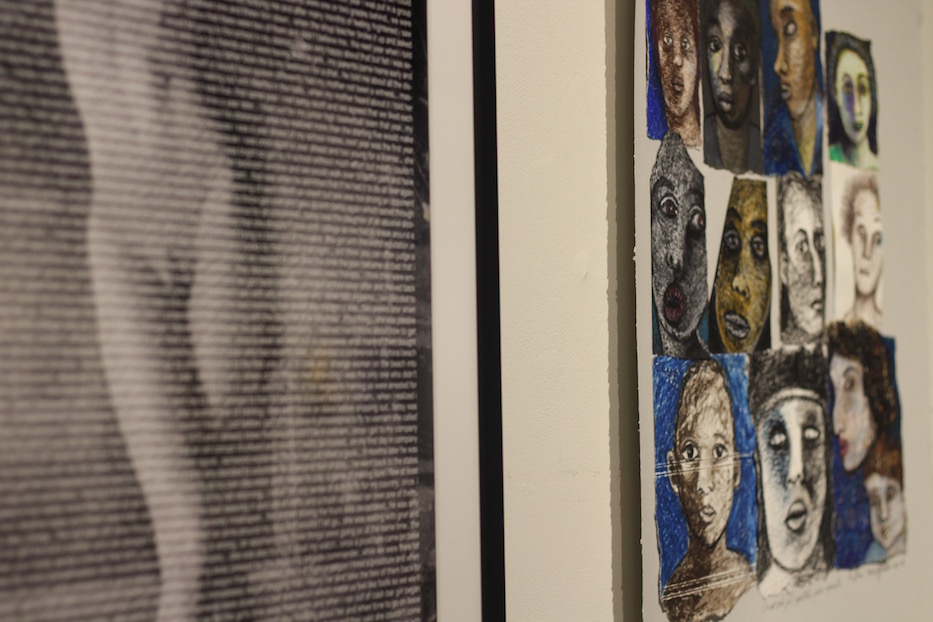
Top: Amanda Duchen’s I Am … A Dreamer. Bottom: Detail of Rod Cook's A Collection of Memories and Fethi Meghelli’s All Of Us.
On the gallery’s walls, paintings seem to strike up conversations with each other. Victoria Selbach’s stern He Loves Me He Loves Me Not can suddenly chatter with Courtney Silvia’s Self Portrait After Judith Leyster With A Hoagie, in which the artist seems fully capable of making fun of herself and showing off her understanding of art history and technique.
Others speak across the distance, as if they too have adjusted to this strange new world of masks and Zoom meetings and six feet at all times. Near Brian Williams’ hulking Swaying Points, Amanda Duchen’s I Am … A Dreamer casts long, bulbous shadows on the white wall. Like her Menagerie Creatures, the clay heads are wonderfully whimsical: they tilt their up to the sky in wonderment, no pair of lips pursed in exactly the same way.
It’s unclear to a viewer what exactly the heads are seeing, but certain that it’s strange and exciting enough for them to want to see it. The multi-part sculpture seems to talk to Fethi Meghelli’s All Of Us, in which 12 charcoal and oil pastel faces mix on a large, gridded page, as if they are meeting each other for the first time. The faces are all different: they look out at the viewer with bright and grayscale lips, eyes filled with question. They’re uncertain of what comes next. A viewer may be, too.
| Kate Henderson uses a mix of sculpture, QR codes and infinity boxes to give a novel self-portrait. |
Some artists have taken on the prompt with humor; others leave it wide open, in a way that seems as interpretive for them as it is for the viewer. Kate Henderson invites her viewers to look over a mixed-media assemblage and scan QR codes, which lead to three different infinity boxes. In detail, she tells the viewer what her world looks like during COVID-19—and gives them a chance to see it themselves.
Jackie Heitchue shows viewers her hands and arms, grasping fresh eggs and tree trunks in a way that severs them from her body, but also rebukes the notion that they are merely there to serve others, à la Agnes Varda. For Jeffrey Gangwisch, self-reflection looks like a fish tank, projecting different images onto a wall with video installation, augmented reality and iPads that can be held and sanitized after each use.
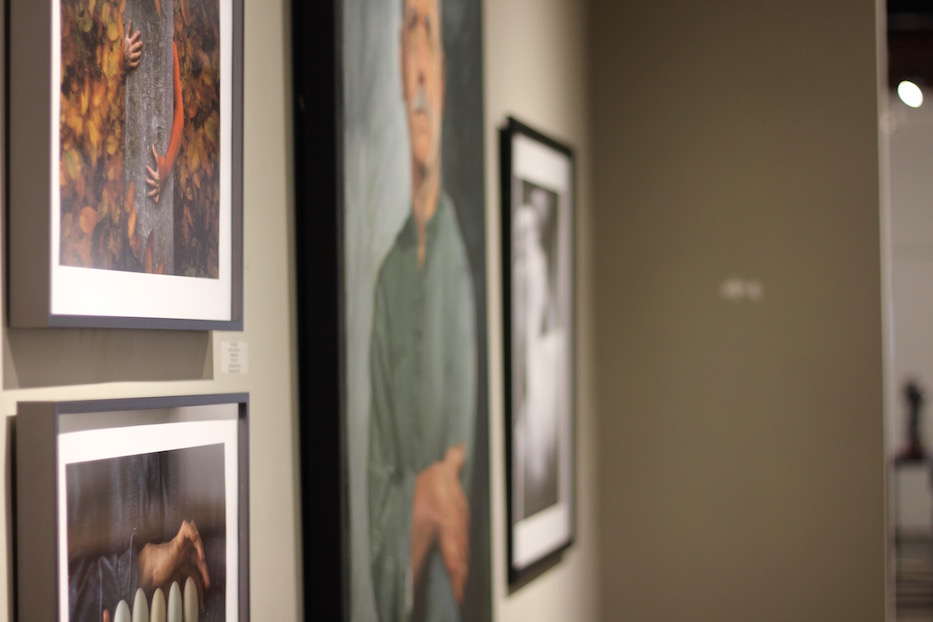
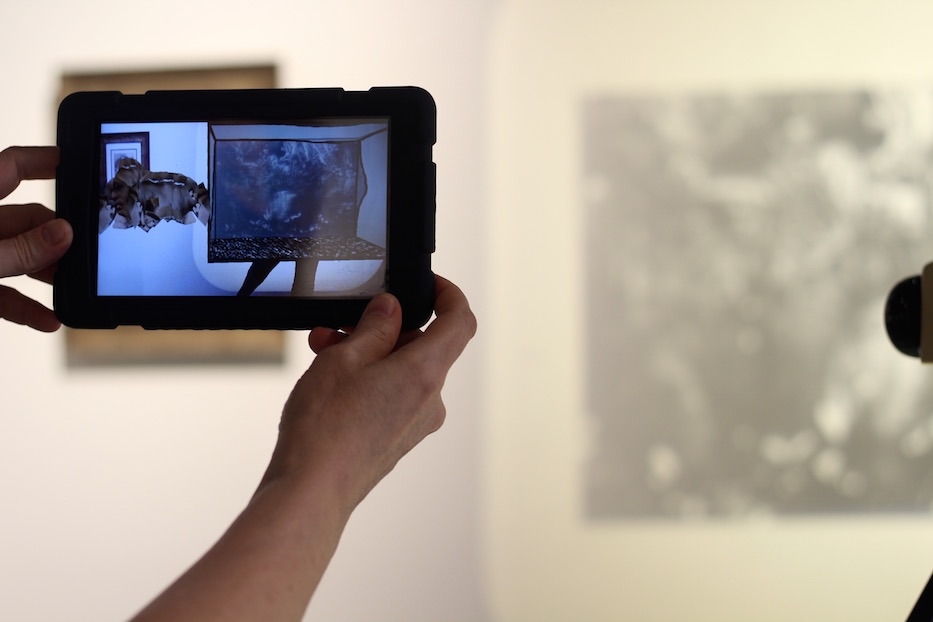
Shamain Hardy promises the viewer she is fun as she blows a huge, pink bubble in profile, with a nail polish-colored, light frame to match. Anthony Videira gets artsy with a jumbled photographic print, in which he pulls the curtain back to expose another version of himself.
Amanda Walker has used mixed media and a tidy dose of self-deprecation to churn out her Self Portrait with Hammer and Tape, in which she has spun herself into a sort of DIY Humpty Dumpty with purple sneakers, perched on a high wall and put back together again.
The piece is charming because it’s wacky: Walker’s depiction of herself looks like a Ukrainian Easter egg met a roll of duct tape, and they both stayed up for an all-nighter. The eyes are bloodshot—which checks out with falling off a wall and putting oneself back together again. The inner shell seems to double as a wide mouth, as if the teeth have been rearranged in the wrong place.
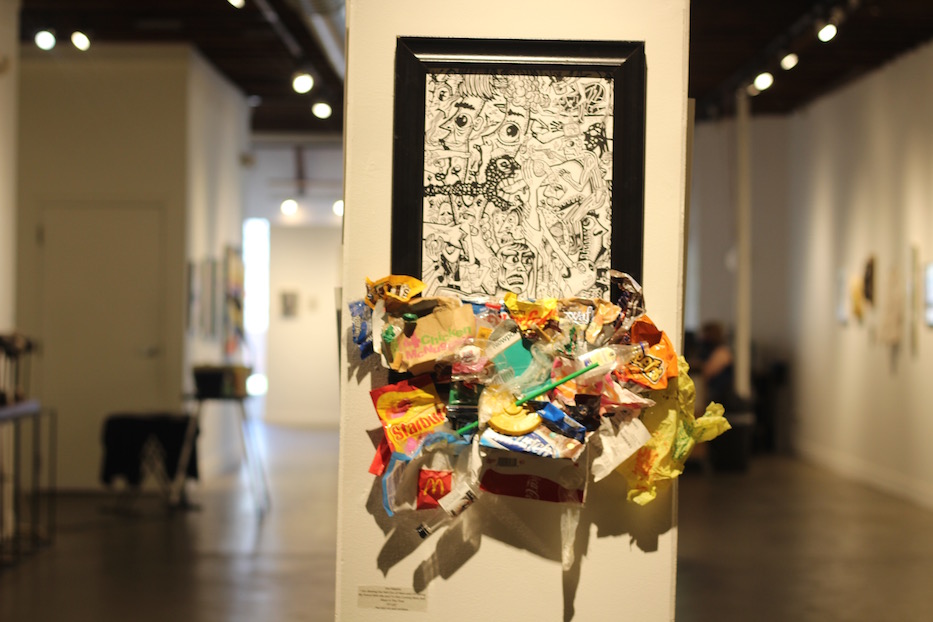
| Joe Fekieta is one of the artists featured in the show. |
In Trae Brooks’ oil-on-acrylic Invisible (Self-Portrait), the artist has represented himself by absenting himself, leaving one searching for discernible traces of him in variants of black, white scribbles and a canvas that hangs like a heavy sheet. That’s the point of the show, it seems: there is always time for a second, and third, and fourth look to tap into an artist’s self-discovery.
“I often struggle with how I identify myself,” he writes on his website. “My background consists of a wide mix of races and ethnicities including Jamaican, Puerto Rican, South Asian, West Indian, Cuban, African American, and European ancestry. Am I black? Hispanic? Mixed? Everything or nothing? My self-portrait series is meant to help me come to terms with who I am, where I belong.”
I Am … runs through August 30. Kehler Liddell Gallery is open by appointment on Fridays and Saturdays. To learn more or make a reservation, visit the gallery’s website. The exhibition is also available to viewers online.


